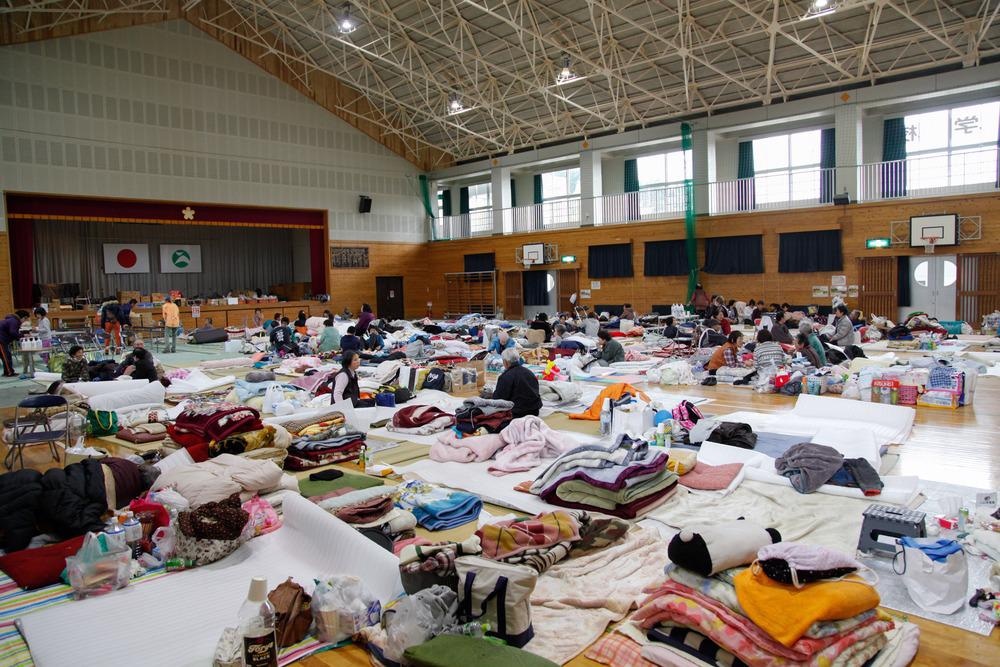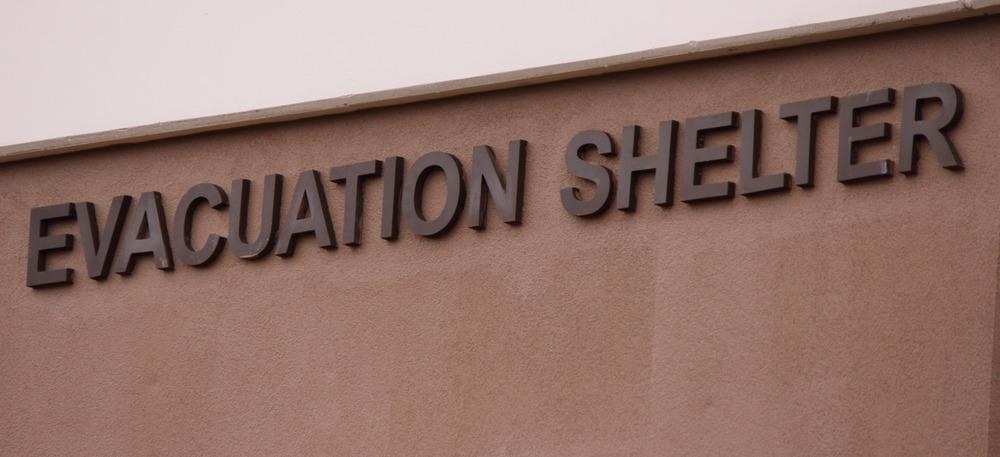To reduce the health impacts following natural disasters, high-quality evacuations shelters are necessary to provide temporary settlements to internally displaced people. Ultimately, evacuation shelters are intended to reduce injury and ensure the health of the population.
Shelter surveillance is necessary to assess the level of hygiene and carry out the assessment of the shelter – as well as assessment of health status of evacuees. Conducting health assessments is necessary due to the increased risk of respiratory, gastrointestinal, and skin infections. The importance of this is underscored by the 2005 Hurricane Katrina in Louisiana, where an outbreak of norovirus occurred among shelter evacuees in a large stadium housing displaced people.
As well as physical health, there are mental health concerns to consider among shelter evacuees; this has been recently reported in the literature. Related to this are distresses related to disasters which include effects on the renal, cardiovascular, or metabolic processes.

Image Credit: amata90/Shutterstock.com
Identifying the Barriers to Health in Evacuation Shelters: Water, Sanitation and Hygiene
To prevent these health risks from manifesting in evacuation shelters, it is important to ensure that resource supplies and sanitation are adequate. Several humanitarian groups have been established to standardize aid provisions following environmental disasters. These include Sphere Project, Active Learning Network for Accountability and Performance in Humanitarian Action (ALNAP), and Humanitarian Accountability Partnership (HAP) among others.
It has been suggested, however, that the standards of water supply, sanitation, food provision, and hygiene require investigation to establish a link between humanitarian intervention and health outcomes. Moreover, longer-term impacts on the health of evacuees following disasters remain to be seen.
A recent study examined the impact of resource supply and infrastructure levels in evacuation shelters. A team from Tohoku University determined, in a cross-sectional observational study of evacuation shelter inhabitants from the 2011 Great East Japan Earthquake (GEJE), that clean tap water supply was a major deficit. #
This deficit was correlated with poor toilet hygiene, which was subsequently associated with the prevalence of gastrointestinal infectious diseases. Collectively, these were determined as being particularly instrumental in preventing the spread of infectious diseases and maintaining health. This was assessed following observations over two time periods (days 14–19 and 20–25).
Other Inadequacies in Evacuation Shelters that Compromise Health
A systematic literature review conducted in 2021 further investigated the medical concerns encountered in temporary evacuation shelters, with a focus on the assessment of environmental sanitation, food and nutrition, and medication availability. These were conducted in the Japanese context, given the high prevalence of earthquakes such as the GEJE and the Great East Japan Earthquake in 2011 and the Kumamoto Earthquake in 2016.
Findings demonstrated that food aid in evacuation shelters was improperly balanced in composition or distribution among shelters. Moreover, chronically ill inhabitants of shelters suffered medication insecurity; a concern exacerbated by the heightened risk of infectious diseases such as tuberculosis, as well as malnutrition.
These factors heightened the risk of deterioration of chronic disease sufferers. This led the authors to conclude that healthcare professionals should be deployed to evacuation shelters following natural disasters to promote sanitary control, educate evacuees and staff, in addition to addressing space limitations, as well as shortages in food and medication.
Risk of Infectious Disease in Evacuation Shelters
These study findings concur with the World Health Organization (WHO) recommendation to adopt systematic measures following natural disasters:
- Rapid assessment
- Infection prevention
- Surveillance
- Control of disease outbreak
- Management
- Evaluation to prevent the spread of infectious disease
These principles have been difficult to uphold, particularly in disasters where damage is extensive and the medical support staff at hospitals are also at risk of becoming victims of the disaster. The implementation of surveillance occurred 1 month after the 2011 Great East Japan Earthquake and 5 days after the 2018 Kumamoto Earthquake, demonstrating improvements in the deployment of this measure. While instrumental, surveillance requires planning, distribution of reporting procedures, and a burden on evacuation shelter staff.
Literature notes that the development and strengthening of human resources are essential for adopting countermeasures for the control of infectious diseases. This included specialists in healthcare as week as local government workers. To augment this, disaster preparation is essential – particularly cross-organizational information sharing with specialist organizations such as universities, government institutes, and medical facilities before disaster strikes
Three factors determine the epidemiology and pathophysiology of infections; these include pathogens, hosts, and environments. Of these, environmental factors pose the greatest influence on the risk of outbreaks following a disaster. Among these factors, hygiene is considered to be critical as poor conditions increase the risk of transmission of infectious diseases. Therefore, a countermeasure that implements the maintenance of a sanitary environment in evacuation centers is critical.

Image Credit: Jean Faucett/Shutterstock.com
Environmental health in Evacuation Shelters to Optimize Health Outcomes
Through analyses of several natural disasters, environmental hygiene conditions are particularly salient factors in the maintenance of human health. Broadly speaking, assessment of emergency shelters has highlighted the following:
- The need for appropriate health plans and actions which document the aims, policies, and procedures for natural disasters that involve multiple agencies
- Coordinated responses of international and national agencies
- Establishing minimum standards of environmental health, with the set-up of these basic requirements i.e. number of toilets, amount of water supply per person, frequency of food and water quality surveillance
- Ensure evacuated shelter set up at all levels – from the community up to governmental level
- Develop and improve technology for the maintenance of standards i.e. food hygiene kits, waste management, and floating toilets
- Develop surveillance and monitoring systems
Assessing emergency shelters is critical to human health; through the adoption of standardized practices following preparation, and ongoing monitoring via assessments, human health outcomes can be improved. This is particularly important following the COVID-19 pandemic, where regular operations must be adjusted to accommodate COVID-19 guidelines.
References:
- Tokumaru O, Fujita M, Nagai S, et al. (2021) Medical Problems and Concerns with Temporary Evacuation Shelters after Great Earthquake Disasters in Japan: A Systematic Review. Disaster Med Public Health Prep. doi:10.1017/dmp.2021.99.
- Akaishi T, Morino K, Maruyama Y, et al. (2021) Restoration of clean water supply and toilet hygiene reduces infectious diseases in post-disaster evacuation shelters: A multicenter observational study. Heliyon. doi:10.1016/j.heliyon.2021.e07044.
Further Reading
Last Updated: Jan 24, 2022